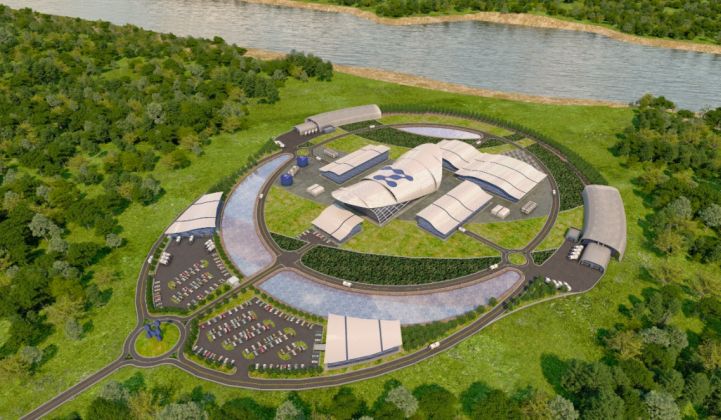The nuclear industry is betting on small modular reactors (SMRs) to regain its competitive edge in markets such as the U.S. and Canada. Proponents say the reactors can be built cheaply once multiple units start being ordered and can even lead to lucrative export opportunities.
There’s just one problem. If you build an SMR in the U.S., for example, you can’t sell it in Canada until Canadian regulators have approved the design. And the same goes for every other nuclear market in the world. Even nuclear insiders recognize that this could be a big issue for SMRs.
“Regulatory harmonization has a lot to do with whether or not SMRs are going to be able to achieve cost competitiveness,” stated John Gorman, president and CEO of the Canadian Nuclear Association, in an interview.
On the surface, national regulation is a good thing. If you’re buying something from abroad, it makes sense to apply your own yardstick to it before letting it loose on your population. That’s why national regulations cover everything from food safety to vehicle emissions.
But the hyper-safety-conscious nuclear industry takes regulation to a whole new level. The SMR manufacturer NuScale, for example, claims to have spent more than $500 million, plus 2 million labor hours, in the process of passing its U.S. Nuclear Regulatory Commission Design Certification Application.
Gorman pointed out that the nuclear regulatory harmonization issue relates only to reactor technologies. On topics such as operations or waste management, countries all stick to the rules laid down by the International Atomic Energy Agency.
“That’s an important differentiation,” said Gorman.
Should SMRs face the same regulation as full-scale plants?
Nevertheless, he said, SMRs face a challenge in being required to jump through hoops designed for multibillion-dollar nuclear projects. “Because they are small, these things can’t afford the sort of regulatory framework and costs that go along with conventional plants,” he said. “So it’s essential, from a cost perspective, that we reach standardization.”
That’s easier said than done. National regulations are not just highly detailed but also wildly divergent. The differences between the regulatory regimes in the U.S. and the U.K., for example, reflect not just different jurisdictions but entirely different safety philosophies.
In the U.K., for example, the onus tends to be on nuclear licensees to demonstrate how a particular regulatory goal has been met. In the U.S., meanwhile, the regulator defines precisely how to meet regulation.
“Each country is responsible for regulating safety within their own jurisdiction, and [that] has resulted in different approaches,” said King Lee, Harmony Programme director at the World Nuclear Association, in an interview.
“The U.K. and some countries in Europe tend to adopt a more goal-based safety regime, where the regulators set the goal and it’s up to the licensee to demonstrate how that goal has been met,” he said.
“Some countries have a more prescriptive regulatory regime, like the U.S., where the regulator defines more precisely how to meet regulation. That is not only in nuclear energy but is part of different safety regulation philosophies between countries.”
Canada’s regulatory regime sits somewhere between these two extremes, which has led the country to believe it has a strong chance of leading the world in SMR commercialization. At the close of 2020, Canada launched an ambitious national action plan to promote SMR technology.
But as things stand, even a regulatory approval from the Canadian Nuclear Safety Commission won’t pass muster in the U.S.
Conscious of the challenge posed by differing regulatory regimes, the nuclear industry is working on harmonization — potentially allowing one country’s set of rules to be valid in another, as happens in some instances with university degrees and driver's licenses.
Moves to make nuclear regulatory harmonization a reality
While noting that nuclear safety is a national responsibility, the International Atomic Energy Agency (IAEA) has taken the lead on this point.
“Although the IAEA safety standards can generally be applied to SMRs, experts from the IAEA SMR Regulators' Forum are working on the challenges of regulating the novel designs of SMRs,” said an IAEA spokesperson via email.
One initial result of these efforts is a guide on the applicability of design safety requirements to SMR technologies intended for near-term deployment. There is still plenty of work to do, however. And there is little consensus over how long it might take.
On one hand, Gorman at the Canadian Nuclear Association said: “There’s a high degree of confidence that the regulatory framework that will expedite these technologies will happen in time for the rollout in the U.S. and Canada and the U.K. We’re talking 2026.”
On the other, Kevin Lee, senior regulatory policy officer at the Canadian Nuclear Safety Commission, said in an interview that while he has no doubt that nuclear regulatory harmonization is on the horizon, it will take time to achieve.
Regulators need first to fully understand the safety implications of harmonization, he said. "No nuclear regulator wants to take shortcuts on regulatory approval at the expense of safety, nor do SMR proponents," he commented.
“Nuclear regulators will only approve the operation of first-of-kind [reactors] if the operator has proven to them that it can be safely operated."




